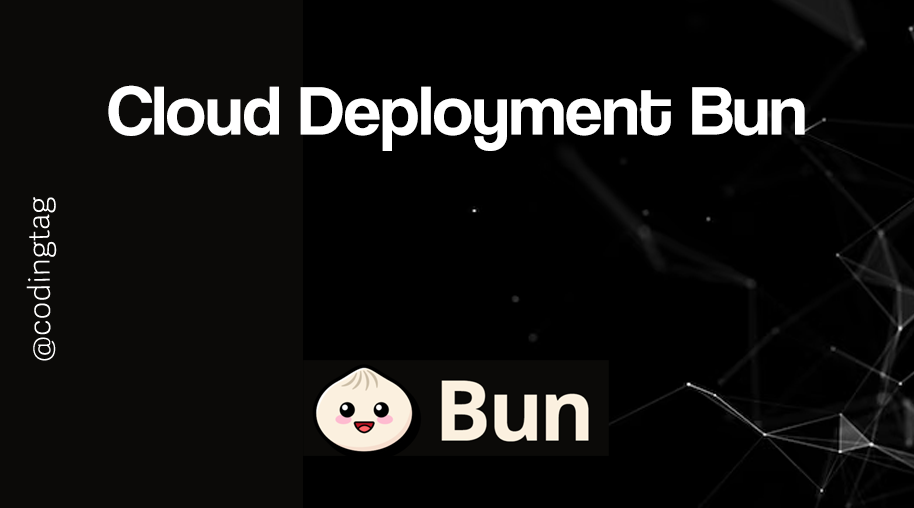Bun + Firebase Setup
0 708
🔥 Bun + Firebase Setup — Building Fast & Scalable Apps
Looking to supercharge your app’s backend with Bun's speed and Firebase’s robust cloud features? You're in for a treat!
In this tutorial, we’ll walk through how to combine the blazing-fast Bun runtime with Firebase services like Firestore, Authentication, and Hosting — giving you a modern stack that's both fast and scalable. ⚡🌐
⚙️ Why Bun + Firebase?
Bun is built from scratch in Zig and is known for its lightning-fast performance. Firebase, on the other hand, provides a suite of cloud-based services ideal for rapid development. Together, they offer:
- 🚀 Super-fast runtime (thanks to Bun)
- ☁️ Scalable backend infrastructure (via Firebase)
- 🔐 Built-in Auth, DB, and Hosting
- 📦 Lightweight deployment
📦 Installing Firebase SDK in Bun
Before anything else, make sure you’ve initialized a Bun project:
bun initNow install the Firebase SDK:
bun add firebase🛠️ Firebase Project Setup
1. Head to Firebase Console
2. Create a new project
3. Add a web app to your project
4. Copy your Firebase config object
📁 Project Structure
bun-firebase-app/
│
├── index.ts
├── firebase.ts
└── bunfig.toml
🔗 Connecting to Firebase in Bun
firebase.ts
import { initializeApp } from "firebase/app";
import { getFirestore } from "firebase/firestore";
const firebaseConfig = {
apiKey: "YOUR_API_KEY",
authDomain: "your-app.firebaseapp.com",
projectId: "your-app-id",
storageBucket: "your-app.appspot.com",
messagingSenderId: "123456789",
appId: "1:123456789:web:abcdef",
};
const app = initializeApp(firebaseConfig);
const db = getFirestore(app);
export { db };
📚 Writing to Firestore with Bun
index.ts
import { db } from "./firebase";
import { collection, addDoc } from "firebase/firestore";
async function addUser() {
try {
const docRef = await addDoc(collection(db, "users"), {
name: "Jane Doe",
age: 28
});
console.log("User added with ID:", docRef.id);
} catch (e) {
console.error("Error adding user:", e);
}
}
addUser();
🔐 Adding Firebase Authentication
To use Firebase Authentication in Bun:
import { getAuth, createUserWithEmailAndPassword } from "firebase/auth";
const auth = getAuth();
createUserWithEmailAndPassword(auth, "user@example.com", "securePassword123")
.then((userCredential) => {
console.log("User created:", userCredential.user);
})
.catch((error) => {
console.error("Error:", error.message);
});
🚀 Deploying with Firebase Hosting
Firebase Hosting is ideal for serving static frontend files.
However, to deploy your Bun backend, you'll need to:
- 📡 Use Firebase Hosting to serve the frontend
- 📨 Deploy your Bun server on Vercel, Railway, or Fly.io
- 🔗 Connect them via environment configs or Firebase Functions (proxy)
🧠 Final Thoughts
Using Bun + Firebase combines the best of two worlds — a lightning-fast JavaScript runtime and powerful cloud services.
While Firebase takes care of hosting, authentication, and storage, Bun ensures your backend logic executes at near-native speeds. 💨
If you want modern dev speed without giving up performance, this combo might be your next go-to tech stack! 🧪✨
If you’re passionate about building a successful blogging website, check out this helpful guide at Coding Tag – How to Start a Successful Blog. It offers practical steps and expert tips to kickstart your blogging journey!
For dedicated UPSC exam preparation, we highly recommend visiting www.iasmania.com. It offers well-structured resources, current affairs, and subject-wise notes tailored specifically for aspirants. Start your journey today!

Share:






Comments
Waiting for your comments